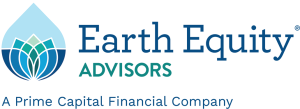[ Forbes ] Taking SRI’s 2021 Key Learnings Into 2022
The sustainable, responsible, and impact (SRI) investing market saw a continued influx of new funds in 2021, sending the number of sustainable funds available to U.S. investors to an all-time high as of the close of the third quarter. This is bittersweet at best.
This growth is spurred largely from investor demand. So, on one hand, we’re happy to see an overall shift of people expecting more from their investments. But more funds also mean more opportunities for greenwashing, as it’s proven to be all too easy to pull the wool over the eyes of investors looking to align their investments with their values.
Possibly even more alarming is the fact that we’re rarely seeing the positive investing philosophy as a theme. By that, I mean that many fund managers are relying on rudimentary metrics to screen for the “best bad apples,” rather than starting with the simple question: “What do we want to own?”
If we are going to make progress, we must stop being “less bad” and start investing in companies that are moving our economy and planet forward.
Taking 2021 Learnings Into 2022
It’s overwhelmingly clear that generic ESG indexes are taking advantage of the everyday investor. Sure, a “sustainable” or “ESG” labeled fund may sound better than the alternative, but when you look under the hood, we’ve found that in most cases they still don’t hold water when compared to funds where the positive aspects in the portfolio are being actively managed.
Last year also confirmed the absence of any type of global framework for SRI. Europeans are closer than America is to having some sort of understanding, but the SEC has only begun talking about regulating what’s considered “sustainable.” And while I’m glad global regulations are being discussed, it looks like said regulation would continue to allow managers to create funds that are “less bad.” This makes absolutely zero sense when we have the ability to invest positively today.
People are always going to fear change. But when we’re talking about SRI investing, change is only scary for those investment firms and advisors still beholden to tracking error against now archaic benchmarks and risk management models put into place after the infamous dot-com bust of the early 2000s. Because we’re still trapped by the decades old tracking error handcuffs, our transition to the next economic paradigm is moving much too slow. And like I’ve said countless times before – you can’t benchmark where we’re going by looking in the rear view mirror.
Some SRI funds did underperform this year because many cutting-edge companies took a breather from 2020’s blistering pace. That and a shift to more value stocks left some portfolios underperforming the traditional benchmarks. But it’s important to remember that, much like innovation stocks, SRI is often early to the party because we look at where the economy is going and which companies are going to take us there. We agree with Cathie Wood of ARK Investments that innovation companies are currently in deep value territory.
Anything in the short-term that slows or interrupts that forward movement is going to add short-term volatility, of course. But just as we can’t change the world overnight, we’re in this for the long haul. When you compare our Green Sage Sustainability Portfolio since inception (December 21, 2012), it beats its benchmark by about 5% year after year.*
Next year, we will be watching closely as the mid-term election will surely influence the markets. If the Democrats lose their slim margin of control, climate action will unfortunately pay the price. Inflation will continue to impact everyday life, as will potential new COVID variants and the ongoing supply chain challenges.
COP26, the Climate Crisis, and Our Role in It All
Global leaders are finally prioritizing climate change as a worthy discussion topic as evidenced by COP26. But the fact that politicians and activists got together for two weeks to talk about what we have known for years, only to walk away with a less than concrete deal in place … doesn’t change our fundamental investment philosophy at all. If anything, I believe the insurance industry may have the single largest responsibility of any industry as they are the ones pricing risk. At the end of the day, we all have a role to play.
The Role of Investment Firms
Financial advisors have a fiduciary duty to act in the best interest of our clients. But as humans, it’s also our duty to consider the impact that our choices make as a whole. Investors are searching for ways to align their investments with their values, and as advisors, we have the tools now to deliver. It’s in the best interest of us all to unshackle ourselves from the traditional benchmark and build resilient portfolios that will carry us into the future.
Our Role as Citizens of Planet Earth
Simply put, everyone needs to do what they can do. Take a look at where your money is invested. If you have the means to put solar panels on your house or buy an electric car, do it. If you don’t, do what you can do – turn your lights off, optimize your thermostat. We all start somewhere, and our collective impact is so much greater than the impact of any one of us.
2022 Hope Meter
I tend to be a political cynic, but at the same time I am also hopeful. When you look at the big picture and pause for some relativity, there are good things happening all around us. Don’t get stuck in the minutia and allow the hope to fade. The current climate crisis is admittedly scary to think about, so think about what we can do – building resiliency and moving away from fossil fuels as fast as we can.
*Past performance is not indicative of future results.
Originally published in Forbes.
Featured Image: Maryna Bohucharska via Unsplash



